Collections are given identity by their owner. That’s what I learnt when I last wrote from the Courtauld and AG Leventis Gallery symposium. It came back to me last weekend when I visited the Queen’s Gallery at Buckingham Palace. The Royal Collection is a particularly unusual collection in still being in private hands but having a sense of public responsibility. The Crown owns all of these wonderful things, most of which we don’t get to see, but a selection of which are made available in the gallery in special exhibitions every year (as well, of course, as going out on loan to other institutions).
It seems to me that the gallery’s two current shows throw the question of private collecting and its relationship to artistic patronage into sharp relief, through the two monarchs associated with both sets of work.
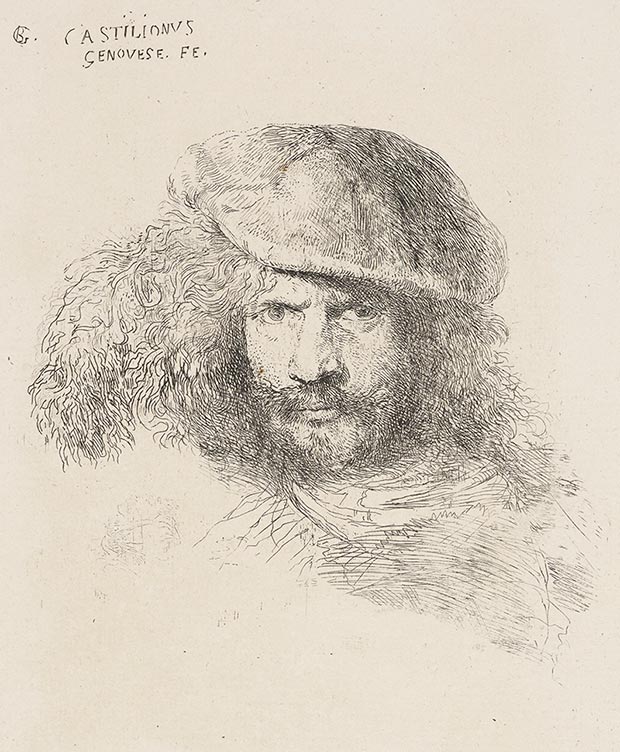
A presumed self-portrait (late 1640s), Giovanni Benedetto Castiglione Royal Collection Trust / © Her Majesty Queen Elizabeth II 2013
The main display showcases Giovanni Benedetto Castiglione, a little-known 19th-century Genoese artist who created unusual virtuoso drawings in oil paint on paper (‘Castiglione: Lost Genius’, until 16 March). They are turbulent and sketchy but intended as finished works. They are also striking and beautiful. The exhibition seeks to reinstate Castiglione as a ‘lost genius’ whose star has waned exponentially since his death.
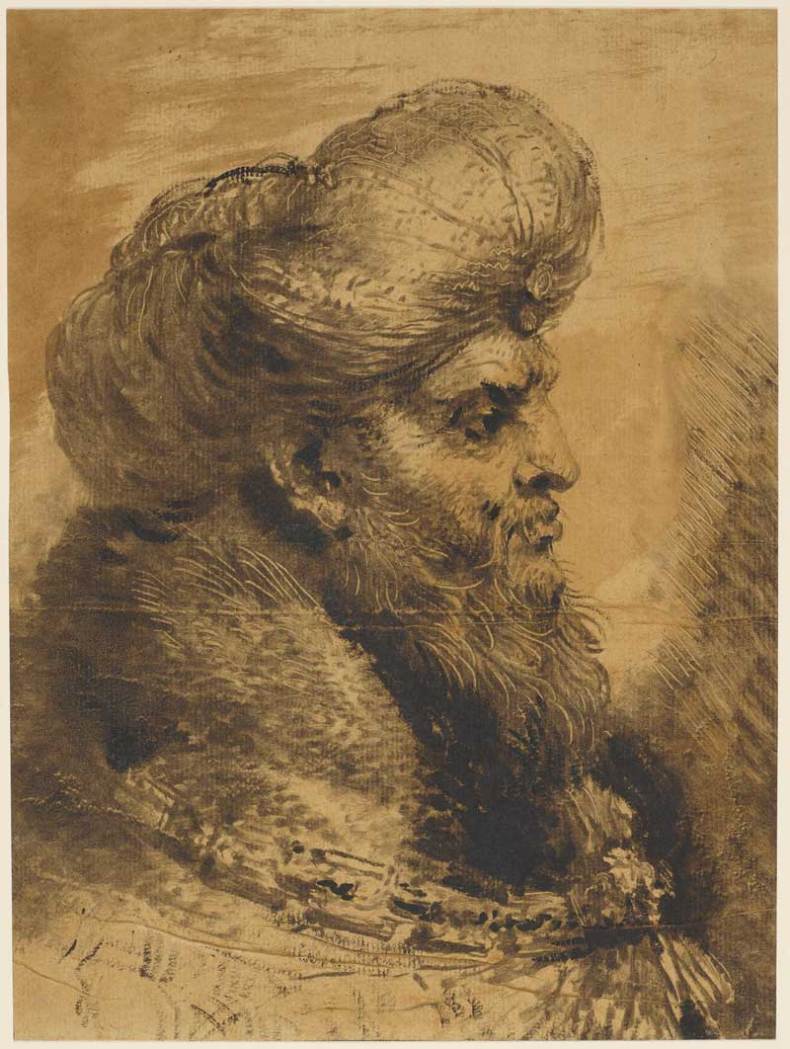
The head of an oriental (late 1640s), Giovanni Benedetto Castiglione Royal Collection Trust/© Her Majesty Queen Elizabeth II 2013
The Royal Collection is able to stage this show because George III bought 250 works by Castiglione in 1762 among the collection of Joseph Smith, British Consul at Venice. It strikes me that, as Peter Crack commented in his review, one reason why Castiglione is so unknown is surely because a vast body of his work has remained secreted in the Royal Collection. Yes, George III saved Smith’s collection from being broken up, and secured its treasures for Britain, but for Castiglione he also took them out of the market and away from public attention.
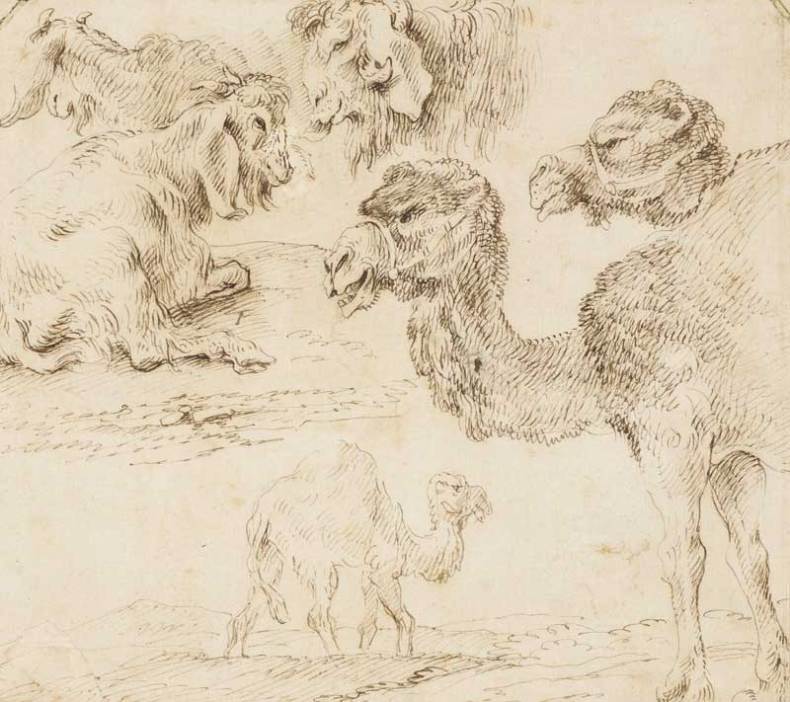
Studies of dromedaries and goats (c. 1630), Giovanni Benedetto Castiglione Royal Collection Trust / © Her Majesty Queen Elizabeth II 2013
Alongside Castiglione runs ‘Gifted’, a glorious room-full of works on paper given by the Royal Academicians to the Queen to mark her Diamond Jubilee in 2012. The use by some Academicians of monochrome techniques pioneered by Castiglione links the two exhibitions. ‘Gifted’ is a rare opportunity to see works by all the Academicians together, and in a dense hang reminiscent of the print rooms at the Summer Exhibition. There are some wonderful pieces by Tony Bevan and Bryan Kneale, and I particularly enjoyed seeing how sculptors like Anish Kapoor and Antony Gormley responded to the work on paper format.
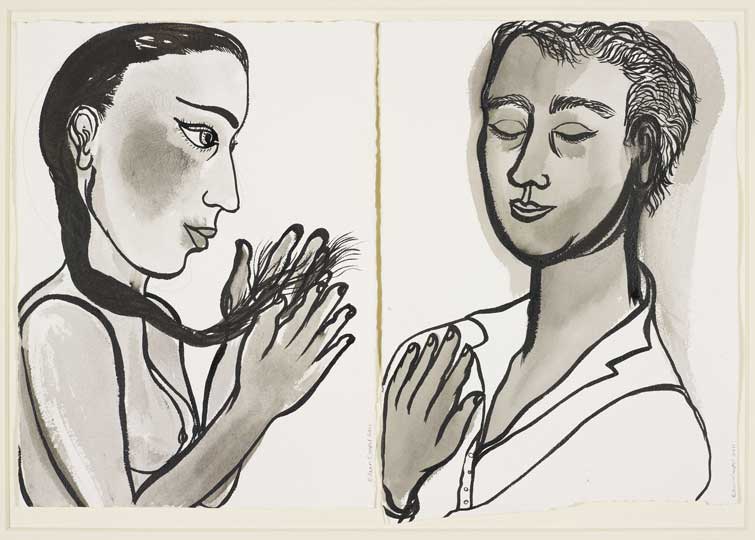
Two portraits from the ‘Couples’ series (2011), Eileen Cooper Royal Collection Trust/ © Her Majesty Queen Elizabeth II 2013
The Academicians are public names to greater and lesser extents but they are certainly publicly available in comparison to Castiglione. Where the Queen is unique here is in representing the patronage able to attract a gift of this type. But then, of course, George III was also responsible here, as he was the monarch who supported the foundation of the Royal Academy in 1768. The ‘Gifted’ display makes this relationship clear by including Johan Zoffany’s exceptional group portrait of the Academicians from 1771–2.
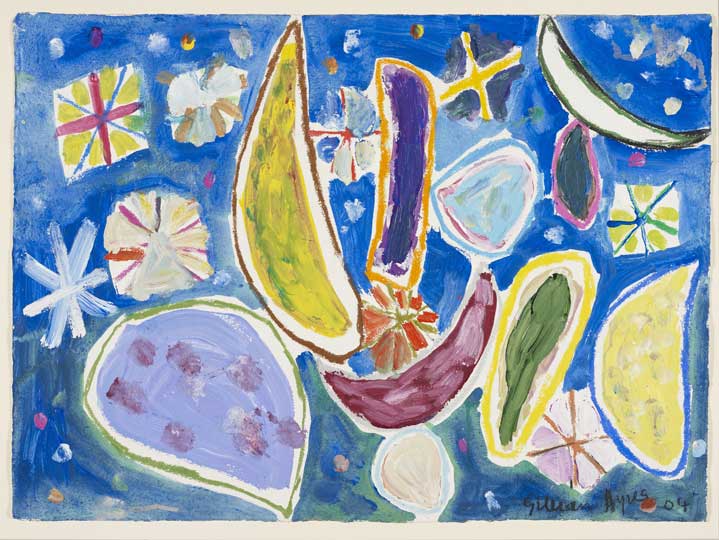
Festive 1 (2004), Gillian Ayres Royal Collection Trust/ © Her Majesty Queen Elizabeth II 2013
So, from George III to Elizabeth II the monarchy has supported and secreted artworks in a way that now animates the ability of the Royal Collection to stage interesting exhibitions. It is perhaps ‘haunted by the past’ more than any collection discussed at the Courtauld symposium.
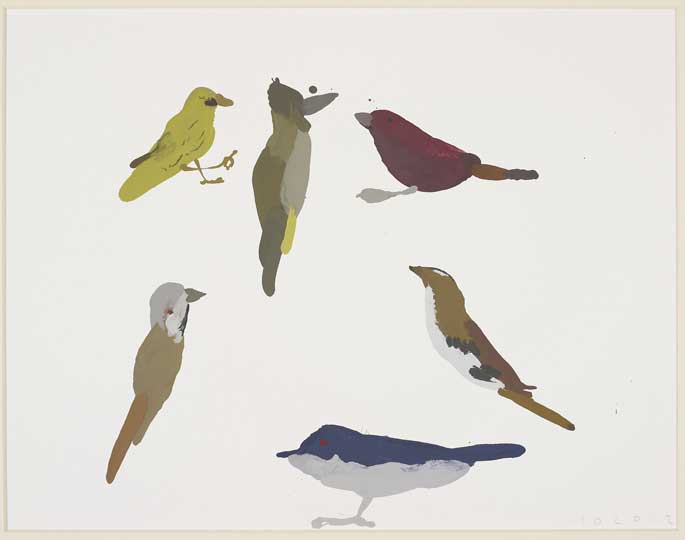
Birds at Ngong (2012), Humphrey Ocean Royal Collection Trust/ © Her Majesty Queen Elizabeth II 2013
‘Castiglione: Lost Genius’ and ‘Gifted’ are at the Queen’s Gallery, London until 16 March.
Related Articles
Missing Genius: Castiglione at the Queen’s Gallery (Peter Crack)
Private Views: Going Public symposium at the Courtauld Institute (Katy Barrett)

Royal Connections
A presumed self-portrait (late 1640s), Giovanni Benedetto Castiglione Royal Collection Trust / © Her Majesty Queen Elizabeth II 2013
Share
Collections are given identity by their owner. That’s what I learnt when I last wrote from the Courtauld and AG Leventis Gallery symposium. It came back to me last weekend when I visited the Queen’s Gallery at Buckingham Palace. The Royal Collection is a particularly unusual collection in still being in private hands but having a sense of public responsibility. The Crown owns all of these wonderful things, most of which we don’t get to see, but a selection of which are made available in the gallery in special exhibitions every year (as well, of course, as going out on loan to other institutions).
It seems to me that the gallery’s two current shows throw the question of private collecting and its relationship to artistic patronage into sharp relief, through the two monarchs associated with both sets of work.
A presumed self-portrait (late 1640s), Giovanni Benedetto Castiglione Royal Collection Trust / © Her Majesty Queen Elizabeth II 2013
The main display showcases Giovanni Benedetto Castiglione, a little-known 19th-century Genoese artist who created unusual virtuoso drawings in oil paint on paper (‘Castiglione: Lost Genius’, until 16 March). They are turbulent and sketchy but intended as finished works. They are also striking and beautiful. The exhibition seeks to reinstate Castiglione as a ‘lost genius’ whose star has waned exponentially since his death.
The head of an oriental (late 1640s), Giovanni Benedetto Castiglione Royal Collection Trust/© Her Majesty Queen Elizabeth II 2013
The Royal Collection is able to stage this show because George III bought 250 works by Castiglione in 1762 among the collection of Joseph Smith, British Consul at Venice. It strikes me that, as Peter Crack commented in his review, one reason why Castiglione is so unknown is surely because a vast body of his work has remained secreted in the Royal Collection. Yes, George III saved Smith’s collection from being broken up, and secured its treasures for Britain, but for Castiglione he also took them out of the market and away from public attention.
Studies of dromedaries and goats (c. 1630), Giovanni Benedetto Castiglione Royal Collection Trust / © Her Majesty Queen Elizabeth II 2013
Alongside Castiglione runs ‘Gifted’, a glorious room-full of works on paper given by the Royal Academicians to the Queen to mark her Diamond Jubilee in 2012. The use by some Academicians of monochrome techniques pioneered by Castiglione links the two exhibitions. ‘Gifted’ is a rare opportunity to see works by all the Academicians together, and in a dense hang reminiscent of the print rooms at the Summer Exhibition. There are some wonderful pieces by Tony Bevan and Bryan Kneale, and I particularly enjoyed seeing how sculptors like Anish Kapoor and Antony Gormley responded to the work on paper format.
Two portraits from the ‘Couples’ series (2011), Eileen Cooper Royal Collection Trust/ © Her Majesty Queen Elizabeth II 2013
The Academicians are public names to greater and lesser extents but they are certainly publicly available in comparison to Castiglione. Where the Queen is unique here is in representing the patronage able to attract a gift of this type. But then, of course, George III was also responsible here, as he was the monarch who supported the foundation of the Royal Academy in 1768. The ‘Gifted’ display makes this relationship clear by including Johan Zoffany’s exceptional group portrait of the Academicians from 1771–2.
Festive 1 (2004), Gillian Ayres Royal Collection Trust/ © Her Majesty Queen Elizabeth II 2013
So, from George III to Elizabeth II the monarchy has supported and secreted artworks in a way that now animates the ability of the Royal Collection to stage interesting exhibitions. It is perhaps ‘haunted by the past’ more than any collection discussed at the Courtauld symposium.
Birds at Ngong (2012), Humphrey Ocean Royal Collection Trust/ © Her Majesty Queen Elizabeth II 2013
‘Castiglione: Lost Genius’ and ‘Gifted’ are at the Queen’s Gallery, London until 16 March.
Related Articles
Missing Genius: Castiglione at the Queen’s Gallery (Peter Crack)
Private Views: Going Public symposium at the Courtauld Institute (Katy Barrett)
Unlimited access from just $16 every 3 months
Subscribe to get unlimited and exclusive access to the top art stories, interviews and exhibition reviews.
Share
Recommended for you
Art Outlook: 6 February
Fakes, lawsuits and feminism… Stories from the art world that have caught our eye this week
Stardust Selection
‘Bailey’s Stardust’ at the National Portrait Gallery opened to the public today: here’s a taster of what’s on show
Serge Poliakoff: Silent Pictures
An exhibition at the Musée d’Art Moderne de la Ville de Paris is an excellent introduction to Poliakoff’s dynamic yet quiet works